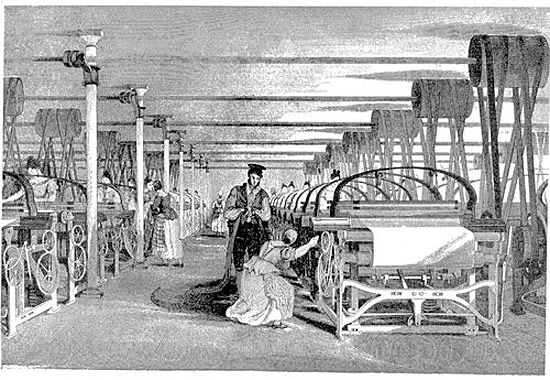
Unit 4: Nationalism, Industrialism, and Imperialism
Lesson A: Birth of the Imperial World
Lesson Overview
Beginning in the early 18th century, the United States, Great Britain, and other European countries transformed their economies. Throughout parts of the West, textile factories that produced cloth emerged. This cloth required cotton, which had to be imported from other countries. As time went on, other factories began to emerge increasing the need for natural resources to fuel the factories. This demand for natural resources and luxury items was one of the major reasons for the rebirth of imperialism. In addition to securing natural resources, Western countries sought markets for their goods to demonstrate their power to the world. These reasons, combined with a desire to spread Christianity, humanitarian motives, and a sense of white superiority over native peoples, led by the end of the 19th century to European domination of most of Africa and Asia. In this lesson, you will explore how and why a new form of imperialism emerged from the late 18th century through the mid 20th century.

Textile Factory in Great Britain [1]
Key Questions
- How and why did imperialism grow during the 19th and early 20th centuries?
- How did various countries control their colonized countries?
- How did people respond towards imperialism?
Student Outcomes
- Explain how the need for raw materials and new markets directly led to imperialism in nations in Africa and Asia.
- Examine how countries such as Great Britain, the Netherlands, France, and Germany established and strengthened control over their colonies through different processes such as warfare and diplomacy.
- Analyze how Social Darwinism and scientific racism was used to justify western imperialism throughout the non-western world.
- Explain the reasons for the creation and the long-term success of European colonial settlements in places such as Argentina, South Africa, Australia, and New Zealand.
- Evaluate multiple perspectives of various peoples in the past by demonstrating their differing motives and beliefs. (Historical Thinking Skill)
Key Terms
Student Resources
- Motives for Imperialism (doc)
- Historical Investigation - Western Responses to Imperialism (doc)
- Impact of Imperialism Brief Constructed Response (BCR) (doc)
Chart of Activities
| Activities to Complete | Estimated Time |
|---|---|
| Pre-Assessment | 5 minutes |
| Key Terms | 5 minutes |
| Activator: 19th Century | 5 minutes |
| Opening: The World of New Imperialism | 10 minutes |
| Activity 1: The Spread of Imperialism | 15 minutes |
| Activity 2: Motives for Imperialism | 15 minutes |
| Activity 3: Social Darwinism and the White Man's Burden | 15 minutes |
| Activity 4: Western Responses to Imperialism | 20 minutes |
| Activity 5: Methods of Controlling Colonies | 20 minutes |
| Review and Assessment | 15 minutes |
| Lesson Summary | 5 minutes |
Lesson Completion Time
The total estimated time to complete this lesson is 130 minutes.
Page Notes:
[1] Source: This image from http://en.wikipedia.org/wiki/File:Powerloom_weaving_in_1835.jpg is in the public domain because its copyright has expired.

